Mozambique: Terrorists attack hunting area in Niassa reserve - AIM
Cabo Delgado’s history of violence – By Joseph Hanlon

File photo: Lusa
- A history of violence presages the insurgency
- Mocimboa’s 2005 post-election riots
- Montepuez 2000 – 92 dead
- Election fraud, on-going violence, attacks on elites
The current civil war is often seen as something unusual, but Cabo Delgado has a history of violence. It was a centre of the slave trade, the liberation war began there and Cabo Delgado saw significant fighting, and we point to two important violent outbursts, in Mocimboa da Praia in 2005 and Montepuez in 2000. Earlier violence showed many similarities with the current insurgency.
Mocimboa’s 2005 post-election riots set a pattern for the insurgency
At least 12 people were killed and 47 injured, with more than 128 homes burned, in clashes in Mocimboa da Praia on 6 September 2005. The riot was an important precursor of the current insurgency, underlining divisions and grievances.
Mocimboa has always been sharply, as elections show, with small differences between parties. (see below) In a 21 May 2005 by-election, the Frelimo candidate was elected mayor by 553 votes, but the margin was clearly due to fraud, as reported by observers at the time. There were daily protests by Renamo, including rallies outside the STAE office which were broken up by police. Demonstrations continued until the inauguration of the new mayor on 5 September, when Renamo inaugurated its candidate as rightful mayor. Early the next day, a large group headed into 30 de Junho neighbourhood, building barricades on the main road and looting and destroying residences of senior Frelimo figures.
The 30 de Junho neighbourhood exemplifies the sharp divisions of Mocimboa da Praia, according to a PhD thesis by Ana Santos. On one side of the main road is the older, dense community of the Mwani, the traditional residents of this area who are Muslim, linked to fishing and trading, and historically linked to the Swahili coast and Tanzania. In multi-party elections, they have backed Renamo. On the other side of the road are the Makondi, in a newer neighbourhood of houses built in straight rows. They are Catholic, from a farming background, and linked to the ruling party, Frelimo. Divisions were widening as Makondi areas began erecting big crosses, including a large Jubilee cross in 2000, which was seen as particularly provocative in a predominantly Muslim town.
Wealth is relative, but the Makondi are seen as richer, in part because so many have pensions for supposedly participating in the independence war, which are not seen as available to Mwani. The money is often first spent on corrugated roofing sheets, seen as a sign of wealth. Thus the crowd attacked the houses of the Frelimo leaders who were seen having unfair political and economic power, and as having stolen the election, They were seen as monopolising pensions and marginalising the Mwani, according to Ana Santos. One Frelimo official was burned to death in his house. Tensions were later exacerbated when it was Catholic agencies which helped those who had lost houses to rebuild even better homes.
But Santos makes a final point important to current war. The former fighters are “Makondi of an older generation [which] creates resentment among those who can make no claim for benefits, e.g. the young and those who cannot claim to have taken part in the liberation struggle. … Being able to say that one is Makonde and of a certain age brings with it strong privileges, and alienates ever growing sections of the population, namely the youth, creating more tension.”
Santos’ research helps to situate Mocimboa at the centre of the new war, and also explains both the role of marginalised youth, and the involvement of young Makondi is what is often billed as an Islamist insurgency. (2010 PhD thesis at St Antony’s College University of Oxford: https://bit.ly/Mocimboa-2005)
Elections in Mocimboa da Praia have always been close. In the 1999 presidential election Renamo head Afonso Dhlakama won 550 more votes that Frelimo’s Joaquim Chissano. In 2004 Dhlakama won 50 more votes than Frelimo’s candidate Armando Guebuza, but with suggestions of fraud, such as a polling station in the secondary school which voted by a 115 vote margin for Renamo in parliamentary elections and was excluded from the presidential count. In the 2003 municipal elections Frelimo’s Cassimo Abdala beat Renamo’s Saide Assane by 157 votes, again with hints of Frelimo misconduct. Assane died on 15 October 2004. Frelimo delayed the by-election, which was highly criticised by the Constitutional Council. It should have been within 60 days of the death, but in fact was not held until 21 May 2005. Armadeu Pedro stood for Frelimo, and Assane for Renamo. This by-election was closely observed. Pedro was declared victor by 533 votes, but there was an outcry because indications of ballot box stuffing and spoiling of ballots for Assane (by adding an extra ink mark during the count) added up to the difference. In one polling station alone, more than 100 Assane votes had been invalidated in this way. Two Renamo appointees to STAE were arrested during the election. The National Elections Commission only approved the results on 24 May 2005 by an 11-8 vote, split on party lines. (Mozambique Political Process Bulletin 32 – 15 July 2005, AIM 29 June 2005 and September, Conselho Constitucional Acordao no 3/CC/2–5 de 28 de Junho and others, and various results as published by CNE & STAE)
Montepuez 2000 – 92 dead – and other violence
Montepuez, Cabo Delgado, has not yet been affected by the current insurgency, but it is close enough to create worries, and there has been on-going violence. In January 2019 Gemfields agreed to pay $8.3 mn to settle claims of torture, the killing of 18 people by mine security staff, and evictions of miners and farmers. In February this year, 800 to 1500 artisanal miners invaded the ruby mines. (This newsletter, 29 Jan 2019 & 19 Feb 2020) But the worst violence was in 2000, when at least 92 people were killed.
The 3-4 December 1999 national election was very close and there was clear misconduct. Renamo claimed it won, and there were protests. Montepuez was one of the places with fraud, with an unexplained difference in 3,256 between presidential and parliamentary votes. On 9 November 2000 Renamo held national demonstrations which were met by a strong police response, with at least 35 people killed. In Montepuez more than 500 demonstrators attacked the police post and took weapons, liberated prisoners from the jail, destroyed administration documents, and took the district administrator and prison director as hostages. The town was occupied for the day, and 17 people were killed, 7 police and 10 demonstrators.
A wave of arrests followed and 94 people were packed into a single cell of 7 metres by 3 metres (4 people per square metre) and 75 died of suffocation on 22 November. Autopsies showed they had not been fed for at least three days. (Metical 27 & 29 Nov 2000, AIM 25 Nov 2000, Mozambique Political Process Bulletin 28: https://bit.ly/MPPB-28)
Montepuez is particularly poor and in 2000 was suffering from the collapse of the cotton sector, as well as an influx of people trying to find work. The district also shows that religion and ethnicity are not the same. The district is overwhelmingly Macua, but is 61% Muslim.
Also in Cabo Delgado as part of the 9 November 2000 Renamo demonstrations, in Quissanga on the Cabo Delgado coast (a centre of the current war), Renamo attacked the residence of the district administrator. The police blocked their path, and opened fire, successfully defending the building. However Renamo did occupy the Quissanga administrative offices, which they held for several hours. Four people were injured in the Quissanga clashes.
In Balama, in the south of the province, where at least two polling stations had been excluded from the presidential contest without explanation, three people died in street fighting. In Pemba, police opened fire to prevent the demonstrators reaching the provincial governor’s residence. But demonstrators did beat the provincial director of the Electoral Administration Technical Secretariat (STAE), Assara Marques, whom they blamed for the fraud. (AIM 10 Nov 2000) More than 3000 presidential votes were “lost” in Pemba in 1999.
Ongoing violence and attacks on elites have been a feature of Cabo Delgado and the coastal zone for more than two decades, with a belief that elites want the poor dead. In Muidumbe, a focus of the current civil war, 24 people were lynched, accused of magically commanding lions who ate local people, or dressing in lion costumes to kill. This was an attack on the elite, said to be led by the district administrator who was a liberation war veteran. And in yet another precursor to the current war, the attacks were led by marginalised youth hanging around the Muidumbe market. (Paolo Israel article in 2009 Journal of Southern African Studies: https://bit.ly/Muidumbe-lions) Cholera riots were highlighted by Carlos Serra: http://bit.ly/SerraCol My February report also discusses historical violence http://bit.ly/CDelgadoOrigins
By Joseph Hanlon






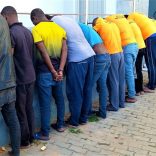
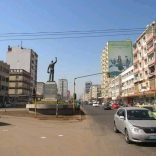
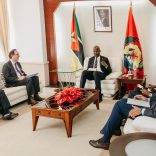
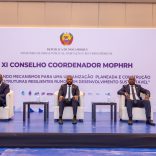
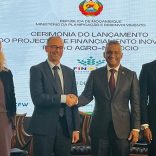


Leave a Reply
Be the First to Comment!
You must be logged in to post a comment.
You must be logged in to post a comment.